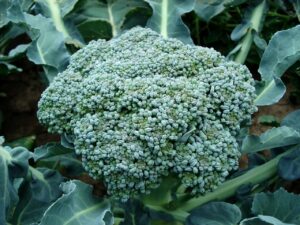In this guide, we will explore a delightful array of fast-growing summer flowers that not only beautify your garden but also lift your spirits with their charm.
Sunflower
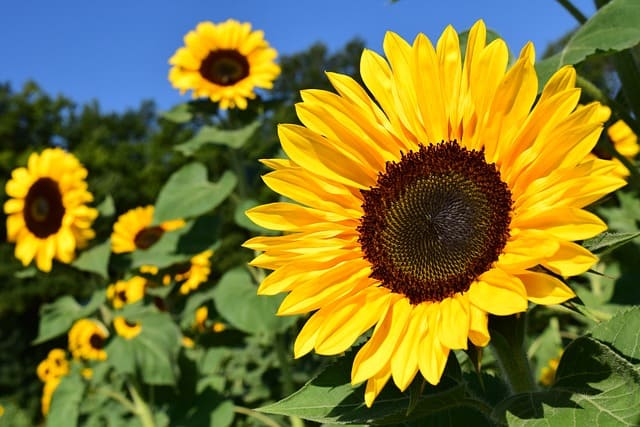
Sunflowers (Helianthus annuus) are the embodiment of summer cheerfulness with their large, bright yellow blooms that seem to follow the sun across the sky. They grow rapidly, often reaching up to six feet tall in just a few months. Sunflowers love full sun and thrive in well-drained soil, making them easy to care for.
One fascinating quality of sunflowers is their unique relationship with pollinators. Bees and butterflies flock to their vibrant blooms, making them excellent choices for creating a pollinator-friendly garden. Moreover, after their blooming period, you can harvest sunflower seeds for snacking or replanting for the following year, adding to their appeal.
Marigold
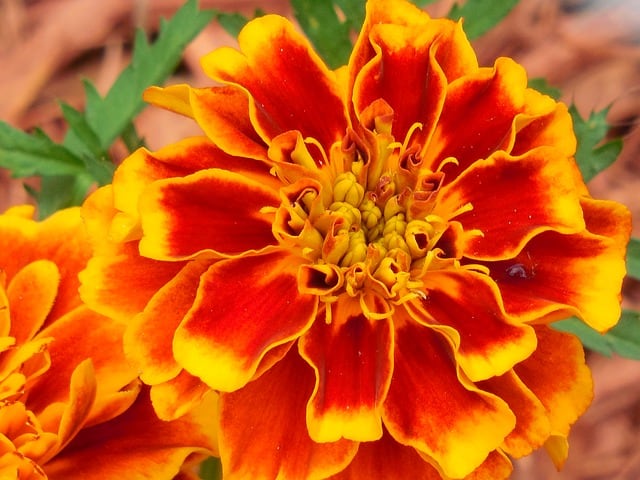
Vibrant and cheerful, marigolds (Tagetes spp.) are popular choices for summer gardens thanks to their quick growth and longevity. These annuals can sprout from seed to bloom in as little as six to eight weeks, bearing bright orange and yellow flowers that can light up any garden corner.
Marigolds are not only beautiful; they also have functional benefits. They are known for their ability to repel certain pests, including nematodes and aphids, making them ideal companions in vegetable gardens. Their resilient nature means they bloom continuously throughout the summer, providing an ongoing source of color and life.
Zinnia
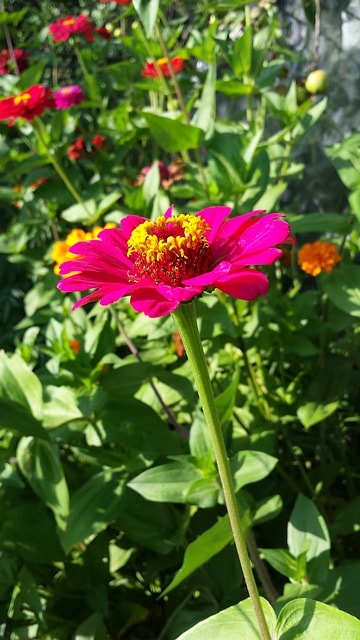
Zinnias (Zinnia elegans) are another fantastic choice for gardeners looking to add a burst of color quickly. These flowers come in an array of hues, including pink, red, yellow, and white. One of the most appealing aspects of zinnias is their adaptability; they thrive in most soil types as long as they receive ample sunlight.
Typically, zinnias bloom within eight weeks of sowing, and they are relatively drought-tolerant once established. This characteristic makes them less demanding in terms of water needs, allowing busy gardeners to enjoy their beauty without constant care. Plus, zinnias look spectacular in bouquets, making your floral arrangements pop.
Cosmos
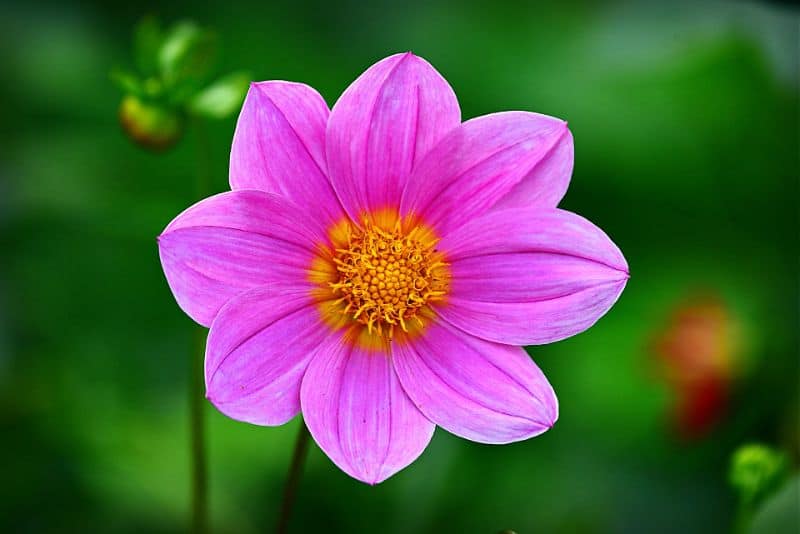
With their delicate petals and whimsical appearance, cosmos (Cosmos bipinnatus) give any garden a touch of elegance. These flowers are known for their fast growth and can bloom within just six to seven weeks of planting. Cosmos come in shades of pink, white, and deep burgundy, adding a romantic feel to any garden setting.
Beyond their aesthetic appeal, cosmos attract beneficial insects, including bees and butterflies. They perform exceptionally well in poor soil conditions and thrive in sunny areas. Their natural beauty is enhanced by their feathery foliage, which creates a stunning contrast against their vibrant blooms.
Morning Glory
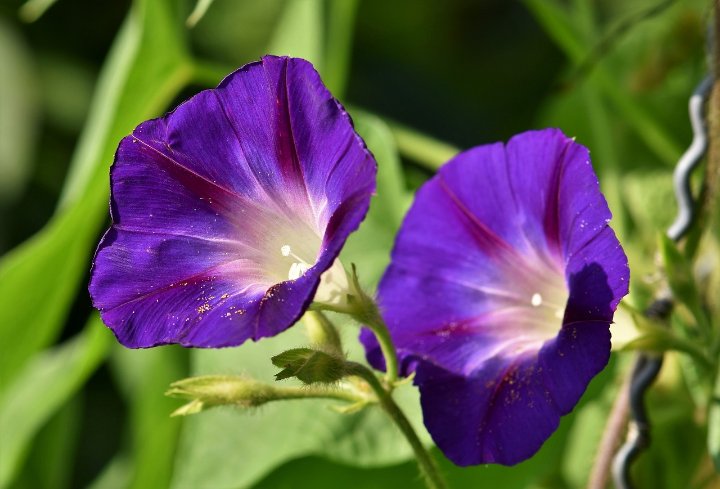
Morning glories (Ipomoea spp.) offer a stunning display of colors as they climb fences, trellises, or any support they can find. These fast-growing vines are perfect for creating vertical interest in your garden. They typically bloom from summer onto fall, showcasing their trumpet-shaped flowers in shades of blue, purple, pink, and white.
Morning glories thrive in full sun and can reach heights of 6 to 12 feet in a single summer, quickly transforming dull spaces into vibrant displays. However, it’s important to note that they can become invasive, so it’s best to plant them in contained spaces or where they won’t overpower other plants.
Petunia
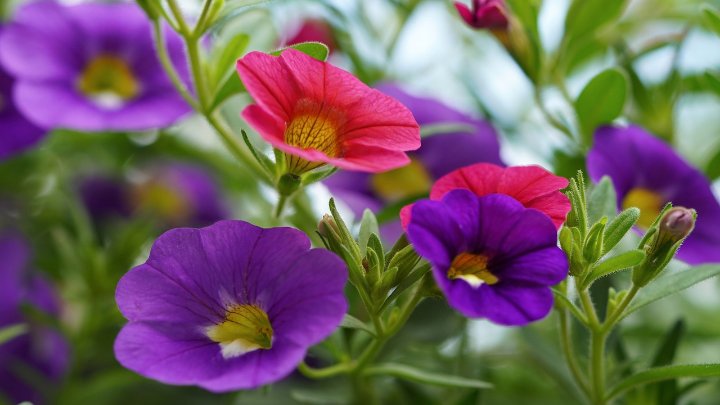
Petunias (Petunia spp.) burst onto the scene with their abundant varieties and colors. Renowned for their swift bloom cycles, these annuals can start flowering within just a few weeks of planting. Their funnel-shaped blooms bring lushness to gardens, hanging baskets, and window boxes alike.
Petunias are not just pretty; they are also incredibly hardy and can tolerate heat well, making them perfect for the summer months. Additionally, the trailing varieties can cascade beautifully, lending elegance to your outdoor settings. Regular deadheading will encourage more blooms and prolong their vibrant show throughout the summer.
Nasturtium
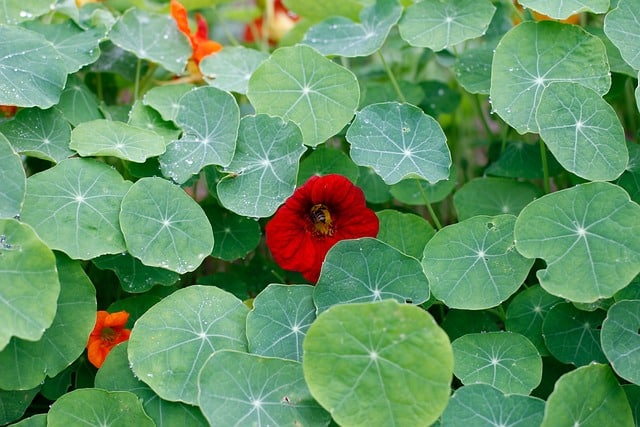
Nasturtiums (Tropaeolum majus) are often overlooked, but their unique, round leaves and bright blossoms add a lovely touch to summer gardens. They grow quickly and flourish within six to eight weeks, offering a mix of colors ranging from bright orange to deep red and sunny yellow.
These flowers are not only aesthetically pleasing; they are also edible! The leaves and flowers of nasturtiums have a peppery flavor, making them a delightful addition to salads. Furthermore, they attract a range of pollinators while helping to deter aphids and other pests, enhancing the overall health of your garden.
Calendula
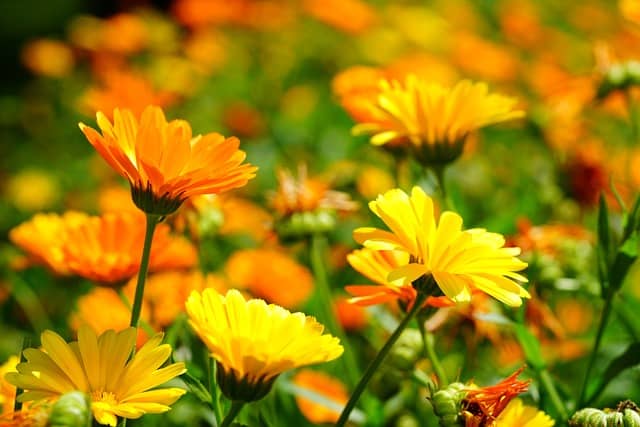
Known commonly as pot marigold, calendula (Calendula officinalis) is another flower that thrives in summer heat and grows rapidly. They bloom in a vibrant array of yellows and oranges and are known for their ability to produce flowers quickly, often within eight weeks of planting.
Calendulas are excellent companions for vegetables and herbs, as they can help repel pests while attracting beneficial insects. The petals of calendula are not just decorative; they are also used in herbal remedies and culinary dishes, making these blooms perfect for both beauty and practicality in the garden.
Snapdragon
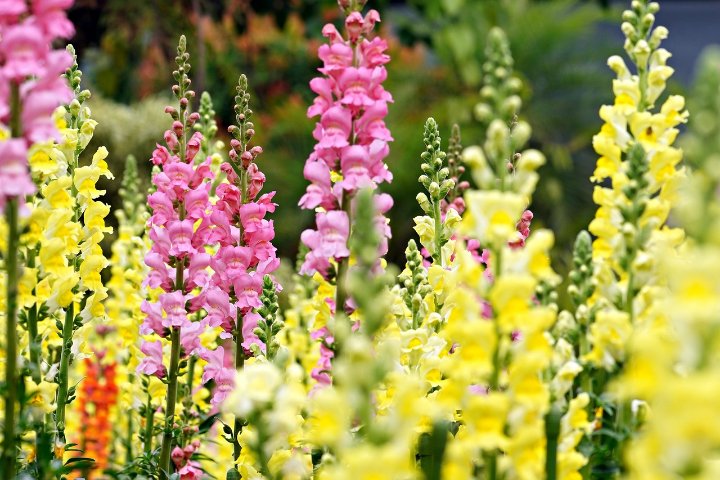
Snapdragons (Antirrhinum majus) offer a unique structure and come in an array of colors, from soft pastels to vibrant shades. They thrive in cooler parts of the summer and can grow up to 4 feet tall, making them excellent for adding vertical interest.
These flowers are known for their rapid growth, often blooming as quickly as eight weeks after planting. Snapdragons have a charming trumpet shape that can intrigue children and adults alike, and they provide a lovely fragrance, making them a sensory delight in the garden.
Alyssum
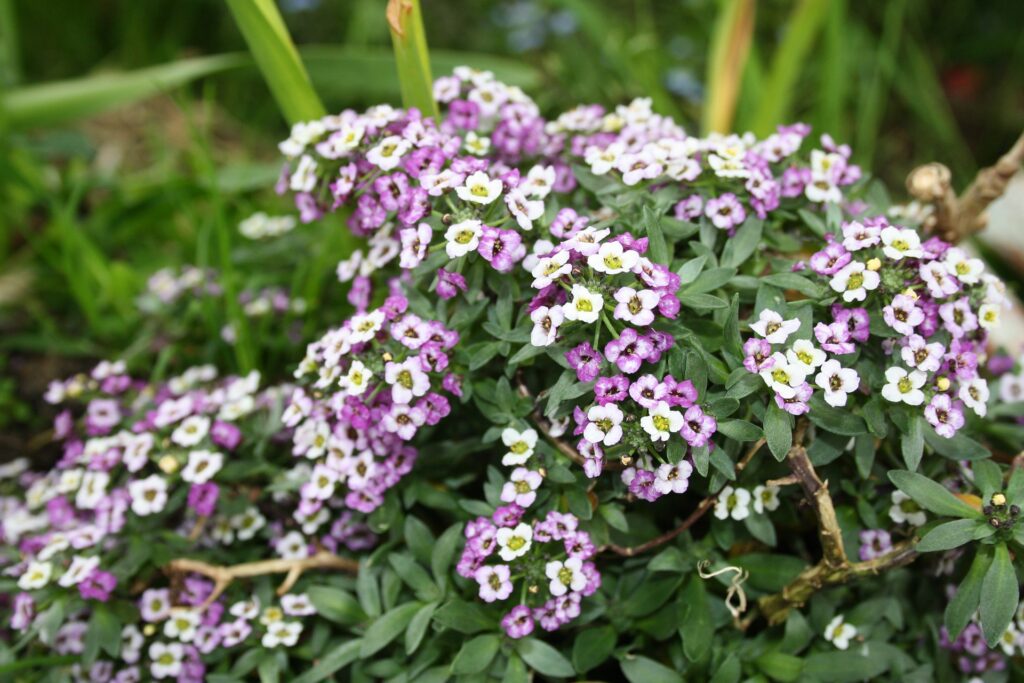
Sweet alyssum (Lobularia maritima) is a favorite for ground cover due to its low growth and delicate clusters of tiny white, pink, or purple flowers. Typically, it blooms within just six weeks from planting, making it an excellent choice for quick color in beds and borders.
Sweet alyssum is not only beautiful but also practical; it attracts pollinators such as bees and butterflies and can help repel pests. Its pleasant fragrance makes it a great companion plant, and its rapid growth means that your garden can be filled with enchanting blooms in no time.
Sweet Pea
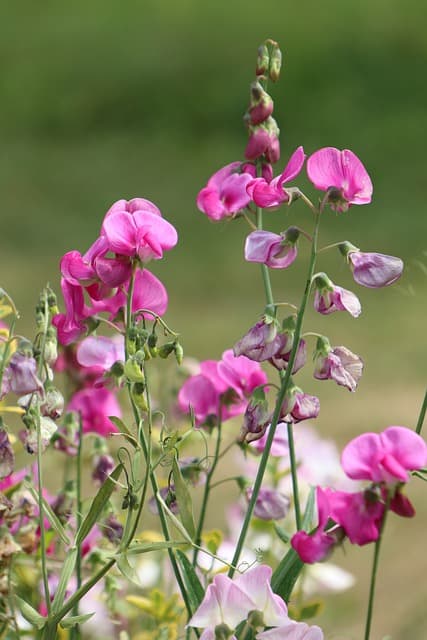
Sweet peas (Lathyrus odoratus) are beloved for their stunning blooms and enchanting fragrance. They grow rapidly, typically flowering within about eight to twelve weeks after planting. These climbing plants add vertical interest and can be trained to grow along trellises, fences, or other supports.
The sweet, clove-like scent of sweet peas is simply irresistible, often evoking nostalgia for cottage gardens. With an array of colors available from bright purples to soft pastels, sweet peas not only beautify your space but also offer delightful bouquets that fill your home with their lovely fragrance.
Impatiens
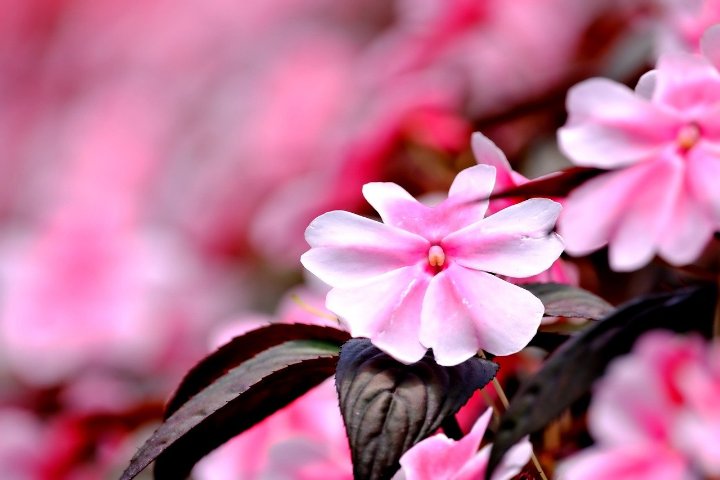
For shady spots in the garden, impatiens (Impatiens walleriana) are a go-to option. Known for their quick growth and ability to flower within a few months, impatiens bloom in cheerful colors such as red, pink, white, and purple, adding splashes of color where other flowers might struggle.
These versatile plants thrive in partial to full shade and are perfect for brightening up those dim corners of your garden. Their bushy habit creates a lush look, and with proper care, they can continue blooming all summer long, providing vibrant color in less-than-sunny spots.
Bachelor’s Button
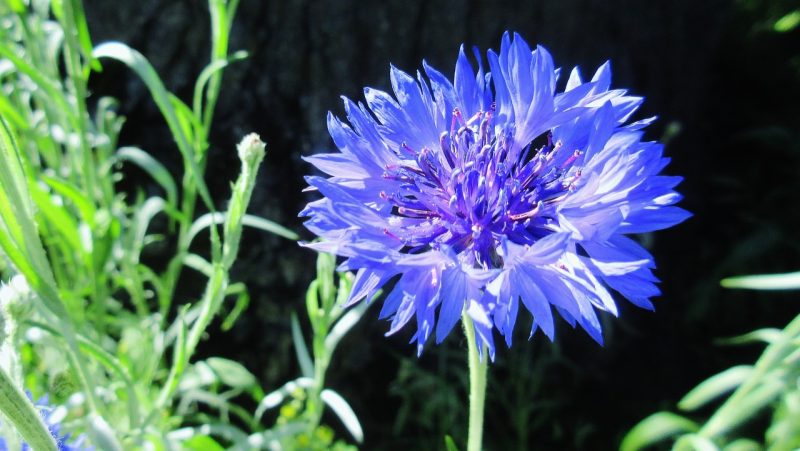
Bachelor’s buttons (Centaurea cyanus), also known as cornflowers, are beloved for their vibrant blue blooms and adaptability. They grow quickly, typically blooming in about six to eight weeks, and can tolerate varying soil conditions, making them an excellent fit for many gardens.
These charming flowers are not just pretty; they also attract pollinators and beneficial insects, aiding in the overall health of your garden ecosystem. With their whimsical nature and robust growth, bachelor’s buttons can be an enchanting addition to flower beds and mixed borders.
Geranium
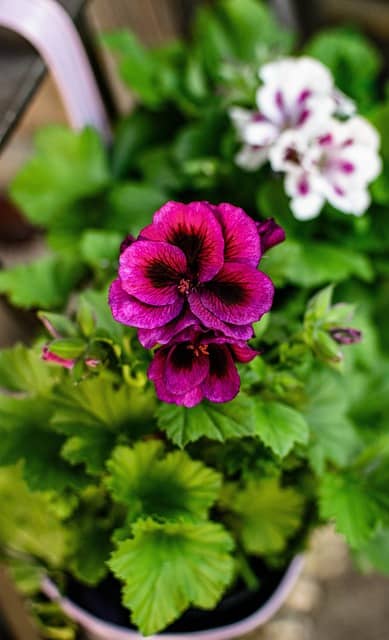
Geraniums (Pelargonium spp.) are popular in both garden beds and containers for their rapid growth and rich variety of colors. They bloom within two to three months of planting, providing long-lasting floral displays from early summer into the fall.
These flowers are very resilient and thrive in full sun, making them easy to care for and ideal for novice gardeners. Geraniums also have fragrant foliage that adds another layer of sensory delight to the garden. Regular deadheading encourages new blooms, ensuring your geraniums put on a continuous show.
Larkspur
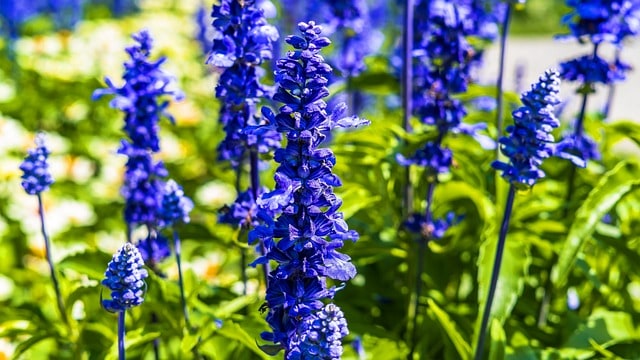
Larkspurs (Delphinium ajacis) are classic garden flowers known for their stunning, towering spikes of blooms that come in shades of blue, purple, pink, and white. They typically bloom within twelve weeks from planting, and their vertical growth habit adds elegance to any garden.
These flowers are quite beloved among pollinators, often drawing bees and butterflies to their striking blooms. Larkspurs do well in cooler climates and can often regenerate in the garden year after year, providing a classic look that gardeners have appreciated for generations.
Coreopsis
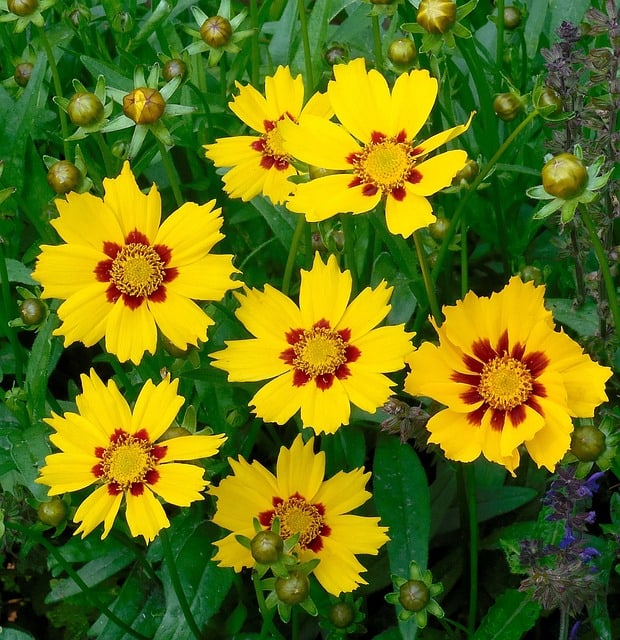
Coreopsis (Coreopsis spp.), commonly known as tickseed, blooms rapidly, often within 60 to 80 days of sowing. Their vivid yellow flowers, sometimes with red or brown centers, bring brightness to gardens and attract bees and butterflies, contributing to a lively garden ecosystem.
These perennials are drought-tolerant once established, making them a low-maintenance choice for those who may not have time for constant watering. Coreopsis tends to bloom throughout the summer, providing a vibrant addition to perennial borders and wildflower gardens alike.
Black-Eyed Susan
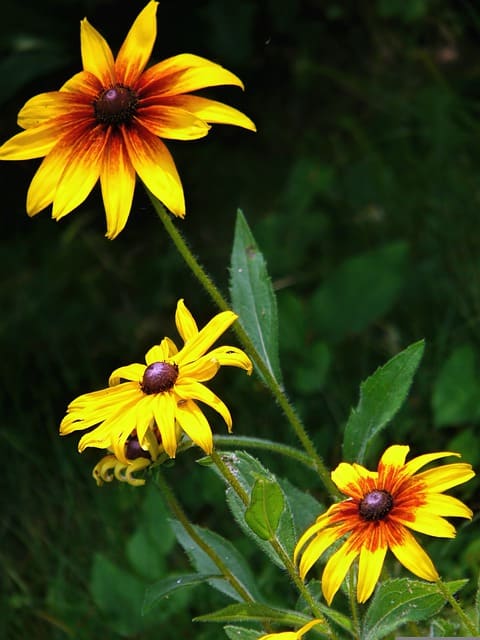
Black-eyed Susans (Rudbeckia hirta) are characterized by their bright yellow petals and dark centers, offering an inviting appearance that attracts a multitude of pollinators. These sturdy plants typically bloom within about 70 to 80 days after planting, shining brightly in the late summer sun.
They thrive in a range of conditions and are known for their resilience, making them a favorite among many gardeners. Falling within the category of perennials, black-eyed Susans will return year after year, giving you a dependable source of summer joy without replanting.
Pansy
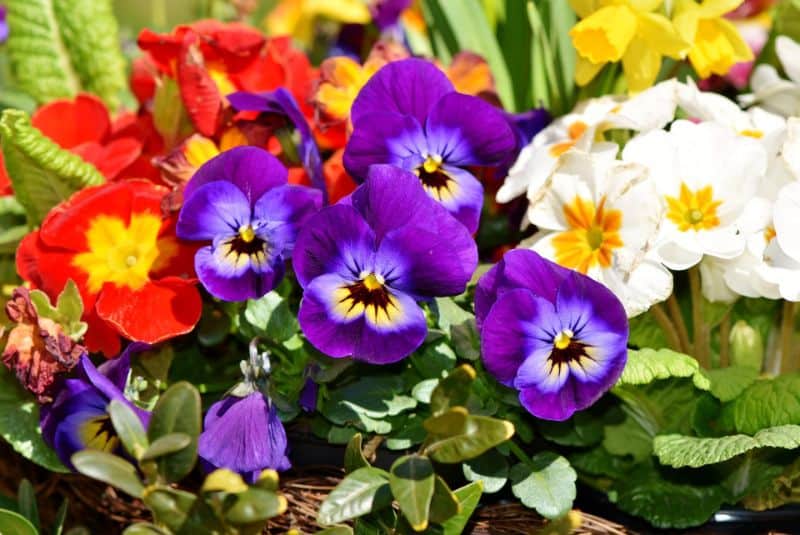
Pansies (Viola tricolor var. hortensis) are among the first flowers to bloom in the spring and can also thrive in the cooler parts of summer. They typically flower swiftly, often within six to eight weeks, presenting a delightful array of colors and patterns, which adds flair to any garden.
These flowers are notable for their ability to withstand cooler temperatures, allowing them to extend through early summer and even into the fall in some regions. With their expressive ‘faces’, pansies are perfect for window boxes, borders, and flower beds, adding both color and personality.
Hollyhock
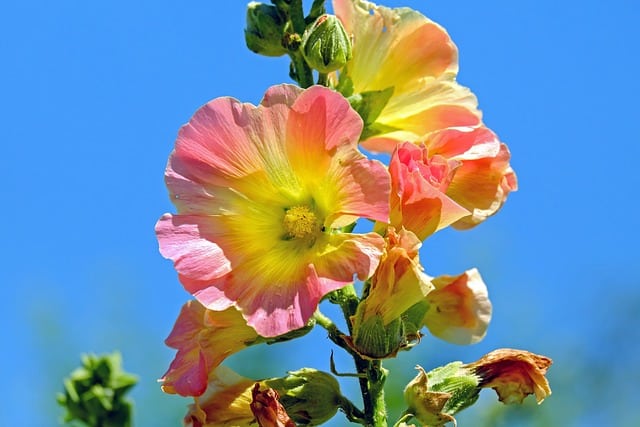
Hollyhocks (Alcea rosea) are striking flowers that can reach impressive heights, often blooming in shades of pink, purple, red, and white. While they can take a bit longer to establish, typically flowering in the first season after being planted, they can create a breathtaking display in any summer garden.
These biennials or short-lived perennials thrive in sunny spots and can provide vertical interest alongside fences or walls. Their charming old-fashioned appearance evokes a sense of nostalgia, making them a favorite among gardeners who appreciate vintage aesthetics.
Mexican Sunflower
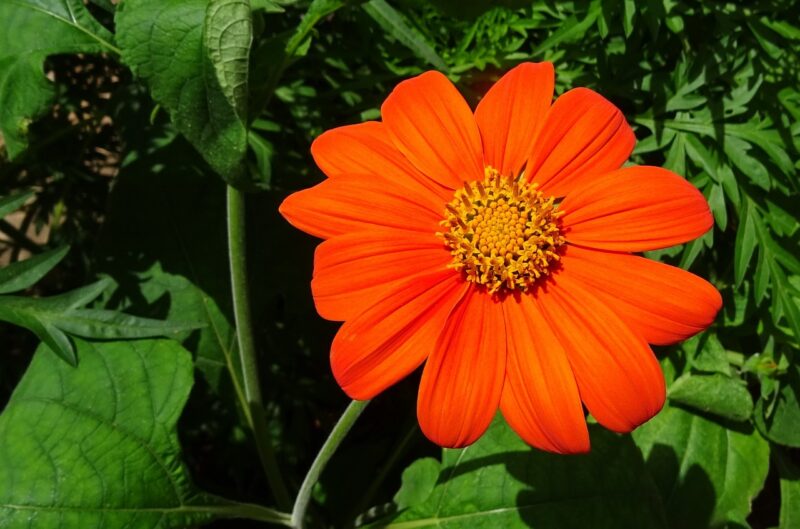
The Mexican sunflower (Tithonia rotundifolia) is a fast-growing annual that can brighten any garden with its vibrant orange and yellow blooms. They typically bloom in about 70 days, reaching heights of up to 6 feet, which adds a striking presence to the summer landscape.
These flowers are known for attracting pollinators, especially butterflies, making them perfect for a butterfly garden. Additionally, Mexican sunflowers are resilient and can tolerate drought conditions, making them an excellent choice for low-maintenance gardening.
Four O’Clock
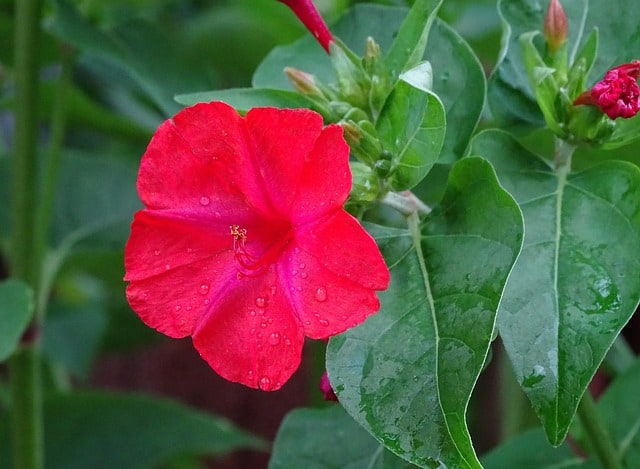
Four o’clocks (Mirabilis jalapa) are uniquely named for their tendency to bloom in the late afternoon and evening. They are fast-growing annuals that flower within two to three months after planting, showcasing their vibrant colors in shades of pink, yellow, and white.
These whimsical flowers are easy to grow in a variety of soils, thriving in sunny spots. They also create a delightful nocturnal show, adding interest to your garden even after the day fades. Regular deadheading can help prolong their blooming season throughout the summer.
Portulaca
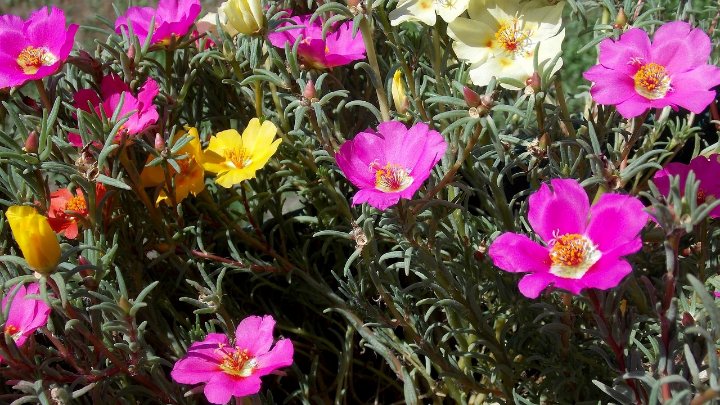
Portulaca (Portulaca oleracea), often known as moss rose, is a succulent plant that thrives in hot, sunny conditions. It’s a fast-growing annual that typically blooms within a few weeks, presenting colorful flowers that range from yellow to pink to red.
These drought-tolerant flowers are perfect for low-maintenance gardens, thriving in poor soils where many other blooms might struggle. Their spreading habit makes them ideal as ground covers or in containers, where their colorful flowers can cascade charmingly over the edges.
Cleome
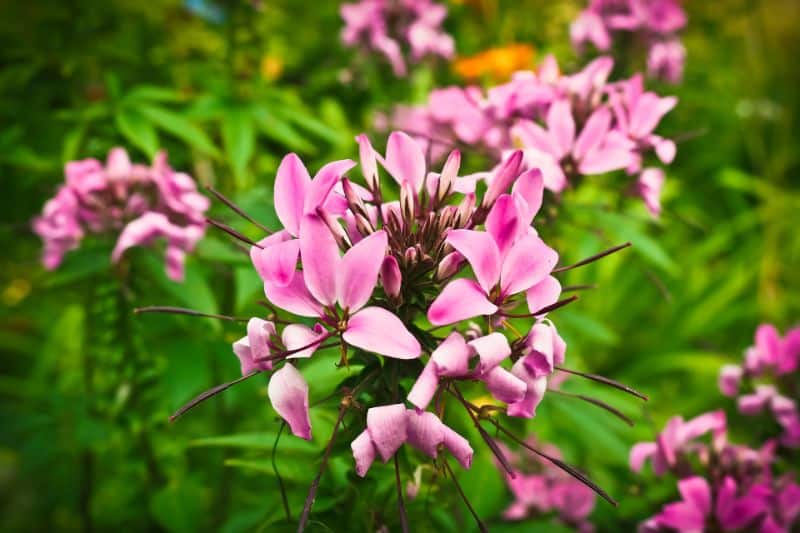
Cleome (Cleome hassleriana), often called spider flower, boasts unique blooms that resemble spidery clusters atop tall stems. These fast-growing annuals typically bloom quickly, adding height and intrigue to summer gardens.
Prized for their unique appearance and resilience, cleomes can withstand various conditions and bloom profusely in the sun. They are also great for attracting butterflies and hummingbirds, enhancing the liveliness of your garden space.
Gazania

Gazania (Gazania rigens) is a sun-loving annual known for its striking daisy-like flowers that come in an array of colors, including yellow, orange, and red. These vibrant blooms usually start to appear within just a few weeks of planting, thriving in hot, dry conditions.
With their tough, drought-resistant nature, gazanias are perfect for challenging garden areas where other plants may falter. Their bright colors close at night and open with the sun, creating a captivating display reminiscent of mornings in the garden.
Daisy

Daisies (Bellis perennis and Leucanthemum vulgare) are iconic summer flowers known for their classic look. They grow quickly and bloom within a few weeks, providing white petals with yellow centers that evoke feelings of simplicity and joy.
Daisies thrive in sunny spots and can be found in various forms, including annuals and perennials. Their charming appearance fits well in gardens, wildflower patches, and meadows, where they can create a stunning visual impact.
Verbena
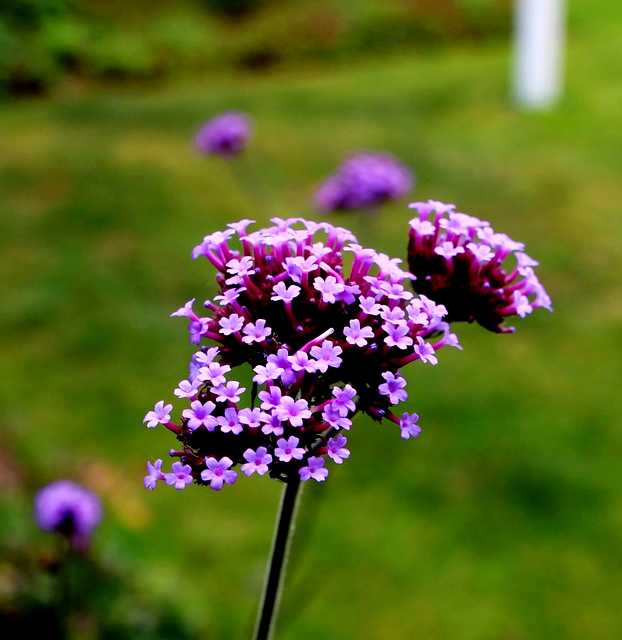
Verbena (Verbena bonariensis) is a lovely summer-blooming flower that grows rapidly, producing clusters of tiny blooms in shades of purple, pink, and red. These flowers typically bloom within eight to ten weeks, making them a favorite among gardeners.
Their airy appearance and tall growth make verbena perfect for attracting butterflies and other pollinators. They’re also known for their ability to thrive in poor soil conditions and achieve lasting blooms even in dry conditions, adding a beautiful touch to gardens with minimal care.
Salvia
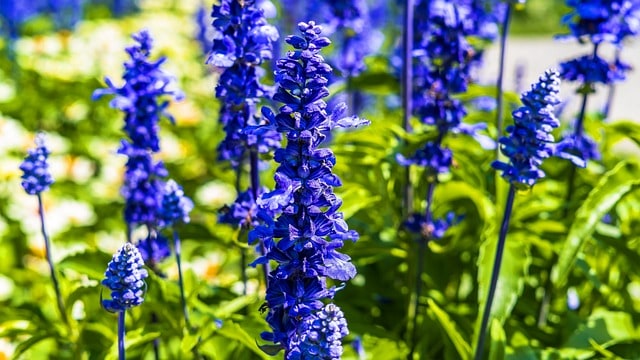
Salvia (Salvia spp.) offers an exquisite variety of colors and forms, making these flowers a versatile addition to any garden. Fast to bloom, salvia can often provide flowers within a season, with many varieties yielding spikes of colors such as blue, purple, red, and white.
These plants are drought-tolerant once established and attract pollinators, making them fantastic choices for sustainable gardens. Their aromatic foliage adds another layer to the sensory experience of gardening, making salvia a treasured component in any flower bed.
Phlox
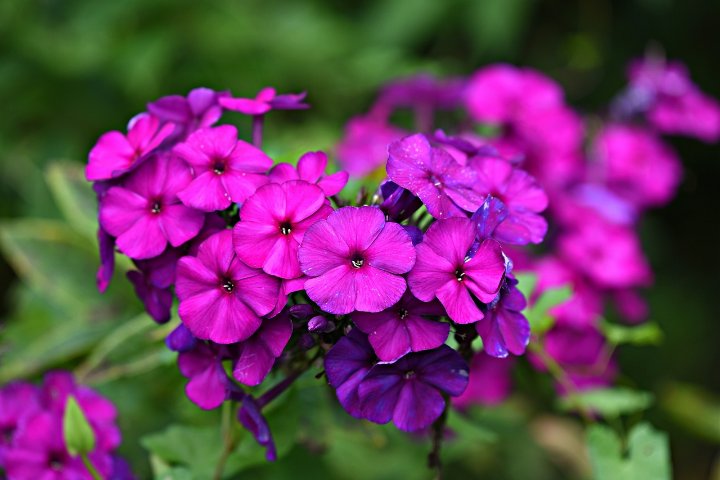
Phlox (Phlox paniculata) is a classic choice among summer flowers, known for their large clusters of colorful blooms. They grow fairly quickly, producing flowers in an array of colors that can last from late spring into fall.
These perennial flowers thrive in sunny spots and can easily fill spaces in borders and beds. Their sweet scent and vibrant hues not only draw attention but also attract various pollinators, enhancing the beauty and health of your garden.
Lavender
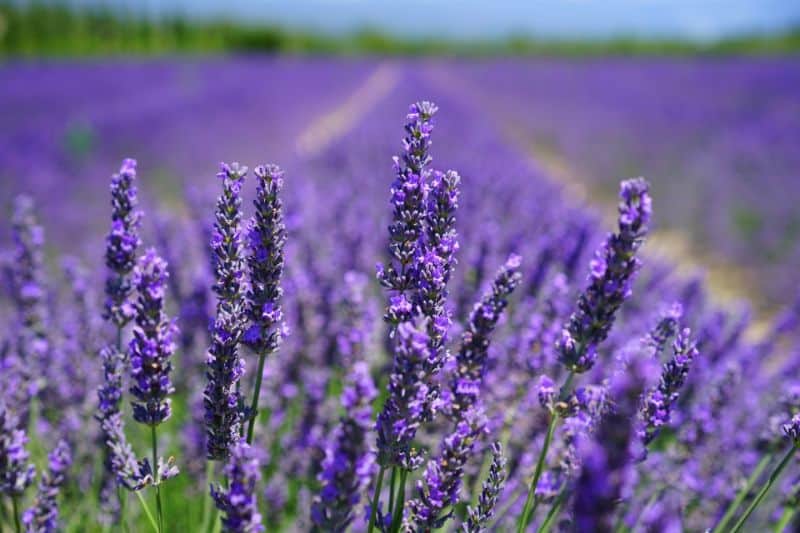
While lavender (Lavandula spp.) may take slightly longer to establish, it is a beloved choice for summer gardens known for its beautiful purple flowers and fragrant aroma. Typically, lavender blooms within one to two seasons after planting, offering stunning, visually appealing displays.
The benefits of lavender extend beyond aesthetics; its scent is calming and can attract a variety of pollinators. Additionally, the dried flowers are perfect for sachets, culinary uses, and even herbal remedies, adding versatility to this stunning plant.
Candytuft
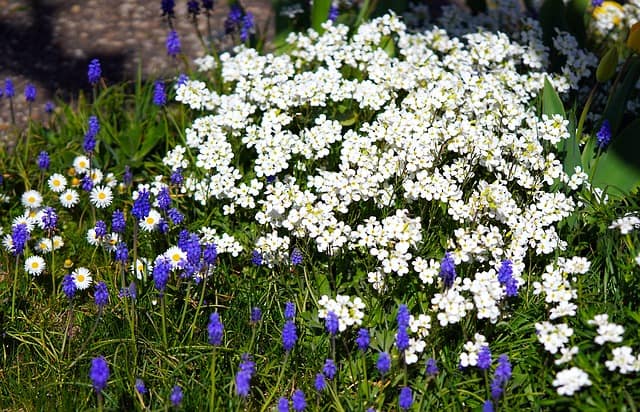
Candytuft (Iberis umbellata) is a fast-growing perennial that blooms in a charming array of colors such as white, pink, and lavender. It often flowers within six to eight weeks of planting, earning its spot among the quick-to-bloom options for summer gardens.
These low-growing plants thrive in full sun, and their dense clusters of flowers work well as ground cover or in rock gardens. With their ability to attract butterflies and other pollinators, candytuft can significantly add to the environmental charm of your outdoor space.
Balsam
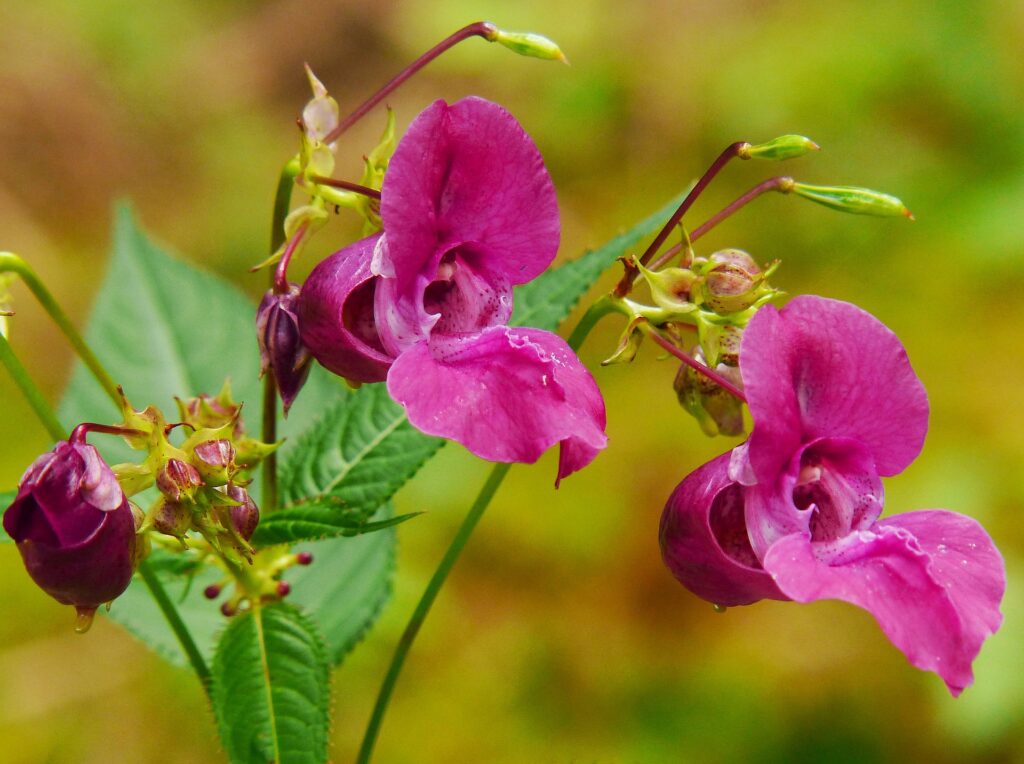
Balsam (Impatiens balsamina), sometimes referred to as touch-me-not, is known for its thick, colorful flowers and fast growth. These annuals can bloom within eight to ten weeks and produce stunning double blooms in a variety of colors.
These flowers thrive in moist, well-drained soil in partial to full shade, making them ideal for colorful displays in shadier parts of your garden. Additionally, balsam’s feathery foliage adds to the overall texture of your garden, creating an inviting atmosphere.
Gaillardia

Gaillardia (Gaillardia spp.), commonly known as blanket flower, brings bold colors to summer gardens with its distinct red and yellow blooms. These flowers often bloom within about eight weeks of planting, making them a swift choice for adding vibrancy.
Gaillardia is drought-tolerant and thrives in poor soil, making it a low-maintenance flower for your garden. Its resilience and adaptability mean it can provide consistent blooms throughout the summer, attracting beneficial insects and pollinators all season long.



